Premium Only Content
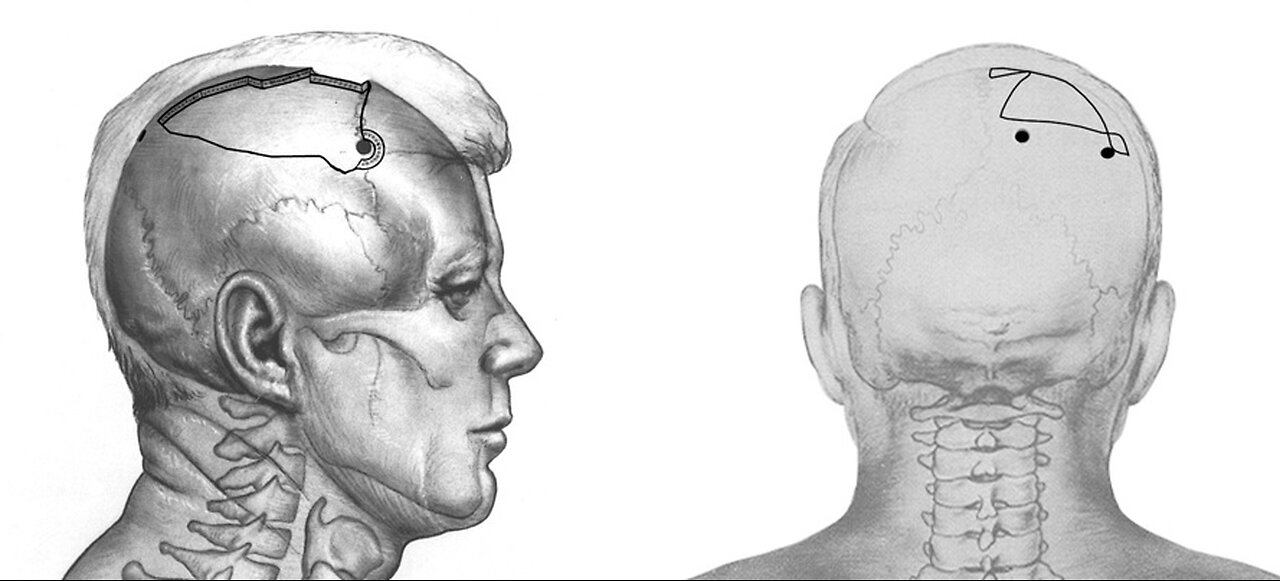
JFK Assassination Conspiracy: The Government’s Conduct in the Investigation (2013)
The President John F. Kennedy Assassination Records Collection Act of 1992, or the JFK Records Act, is a public law passed by the United States Congress, effective October 26, 1992.[1] It directed the National Archives and Records Administration (NARA) to establish a collection of records to be known as the President John F. Kennedy Assassination Records Collection. It stated that the collection shall consist of copies of all U.S. government records relating to the 1963 assassination of President John F. Kennedy, and that they are to be housed in the NARA Archives II building in College Park, Maryland. The collection also included any materials created or made available for use by, obtained by, or otherwise came into the possession of any state or local law enforcement office that provided support or assistance or performed work in connection with a federal inquiry into the assassination.
Background
The final report of the act's Assassination Records Review Board (ARRB) partially credited the conclusions in Oliver Stone's 1991 film JFK with the passage of the act.[2] The ARRB stated that the film "popularized a version of President Kennedy's assassination that featured U.S. government agents from the Federal Bureau of Investigation (FBI), the Central Intelligence Agency (CIA), and the military as conspirators."[3]
Requirements and process
The act requires that each assassination record be publicly disclosed in full and be made available in the collection no later than the date that is 25 years after the October 26, 1992 date of enactment (which was October 26, 2017), unless the President of the United States certifies that: (1) continued postponement is made necessary by an identifiable harm to the military defense, intelligence operations, law enforcement, or conduct of foreign relations; and (2) the identifiable harm is of such gravity that it outweighs the public interest in disclosure.
The definition of "assassination record" was left broad by the act and determined in practice by the ARRB; a final definition was published in the Federal Register on June 28, 1995.[4] The basic definition was:
An assassination record includes, but is not limited to, all records, public and private, regardless of how labeled or identified, that document, describe, report on, analyze, or interpret activities, persons, or events reasonably related to the assassination of President John F. Kennedy and investigations of or inquiries into the assassination.
This was supplemented with coverage of all government records relating to investigations of the assassination (including those specified in Section 3(2) of the act), as well as supplementary records required to clarify meanings of other documents (such as code names used).[4]
The ARRB determined that agencies could not object to disclosure "solely on grounds of non-relevance," stating that the ARRB is responsible for making decisions that determine relevance.[4]
Assassination Records Review Board
The act established, as an independent agency, the Assassination Records Review Board (ARRB), to consider and render decisions when a U.S. government office sought to postpone the disclosure of assassination records. The board met for four years, from October 1, 1994 to September 30, 1998. When the act was passed in 1992, 98 percent of all Warren Commission documents had been released to the public. By the time the board disbanded, all Warren Commission documents, except income tax returns, had been released to the public, with only minor redactions.[5]
The ARRB collected evidence starting in 1992, then produced its final report in 1998.[4] The ARRB was not enacted to determine why or by whom the murder was committed but to collect and preserve the evidence for public scrutiny. After the enactment of the federal law that created the ARRB, the board collected a large number of documents and took testimony of those who had relevant information of the events.[6] The Committee finished its work in 1998 and in its final report, the ARRB outlined the problems that government secrecy created regarding the murder of President Kennedy.[7]
Some of the information was gathered by way of testimony from witnesses that had eyewitness knowledge of the events. For example, the board interviewed the physicians who treated the president's massive head wound at Parkland Hospital in Dallas.[8] This was a highly trained team of emergency care physicians, some of whom testified in secret before the Warren Commission. These transcripts have now also been made public.[9] Other information consists of a large number of documents from the FBI and CIA that were required to cooperate with the turnover of relevant records held secret by these agencies.
A staff report for the Assassinations Records Review Board contended that brain photographs in the Kennedy records are not of Kennedy's brain and show much less damage than Kennedy sustained. J. Thornton Boswell, who, along with James Humes did a secondary examination of Kennedy's brain, refuted these allegations.[10] The board also found that, conflicting with the photographic images showing no such defect, a number of witnesses, including at both the Autopsy and Parkland hospital, saw a large wound in the back of the president's head.[11] The board and board member Jeremy Gunn have also stressed the problems with witness testimony, asking people to weigh all of the evidence, with due concern for human error, rather than take single statements as "proof" for one theory or another.[12][13]
Status
By ARRB law (of 1998), all existing assassination-related documents were to be made public by October 2017.[14] Prior to October 2017, over 35,000 documents were still not fully available (partially redacted) to the public, and among them, 3,603 were at that time unseen by the public.[15][16]
In 2013, the ARRB's former chairman John R. Tunheim and former deputy director Thomas Samoluk wrote in the Boston Globe that after the ARRB had declassified 5 million documents, "There is a body of documents that the CIA is still protecting, which should be released. Relying on inaccurate representations made by the CIA in the mid-1990s, the Review Board decided that records related to a deceased CIA agent named George Joannides were not relevant to the assassination. Subsequent work by researchers, using other records that were released by the board, demonstrates that these records should be made public." Tunheim and Samoluk pointed out that the CIA had not told the Warren Commission that George Joannides was the CIA lead for the Agency's links with the anti-Castro group Oswald had a public fight with in mid-1963; nor had they told the United States House Select Committee on Assassinations (HSCA), of which Joannides was the CIA's liaison.[17] Tunheim said in a separate interview that "It really was an example of treachery ... If [the CIA] fooled us on that, they may have fooled us on other things."[18]
2017 releases
On July 24, 2017, the National Archives began to release the remaining documents previously withheld.[19]
The first release included 441 FBI and CIA records which had previously been withheld in full. These records had never previously been made available to the public. Another 3,369 records were also released which had previously been withheld in part, meaning that they had previously been made public, but parts of the records had been kept back for reasons of security or privacy.[19] Records in the first release included 17 audio files of interviews of Yuri Nosenko, a KGB officer who claimed to have been the officer in charge of the KGB file on Lee Harvey Oswald during Oswald's stay in the Soviet Union. Nosenko defected to the U.S. in January 1964 and was extensively debriefed over a period of several years.[19]
On October 21, 2017, US President Donald Trump stated on his Twitter account that he would allow release of the remaining documents. He tweeted:[20] "Subject to the receipt of further information, I will be allowing, as President, the long blocked and classified JFK FILES to be opened." His statement left open the possibility that some documents could still be withheld under the JFK Records Act if their release would harm military operations, law enforcement or foreign relations.[21][22]
On October 26, Trump signed a memo ordering release of all records collected under section 5 of the JFK Records Act. He gave agencies wishing to appeal release of all information in these records until April 26, 2018, to do so.[23][24][25]
On the same day, the NARA released another 2,891 records. Most of the records in this second release were previously withheld in part.[26]
On November 3, the NARA released another 676 documents. Most of these were previously withheld in full.[27] According to the Mary Ferrell Foundation, which holds a large database of records on the assassination, the majority of the records in this third release were from the CIA.[28] These files still contain a number of redactions, which remain subject to further review under President Trump's order.
On November 9, the NARA released another 13,213 records. Most of these were previously withheld in part.[29] According to the Mary Ferrell Foundation, the records in this fourth release were from the CIA and NSA.[28] Some of these records were redacted in part. These redactions remain subject to further review under President Trump's order.
On November 17, the NARA released another 10,744 records, including 144 previously withheld in full and 10,600 previously withheld in part. All of the records in this fifth release were from the FBI.[30] Some of these records were redacted in part. These redactions remain subject to further review under President Trump's order.
On December 15, the NARA released another 3,539 previously withheld documents, leaving a total of 86 still classified in full.[31]
Later releases
On April 26, 2018, the NARA released another 19,045 documents in accordance with President Trump's order.[32] These releases include FBI, CIA, and other agency documents (both formerly withheld in part and formerly withheld in full) identified by the Assassination Records Review Board as assassination records.[33] While no more documents required to be released under section 5 remain withheld in full,[32] some still remain withheld in part.[32]
In 2021, President Joe Biden postponed the release of remaining records, citing the COVID-19 pandemic as the reason.[34] Future releases of documents were scheduled for December 15, 2021, and December 15, 2022. Agencies that object to releasing records before then will have to provide unclassified information detailing why the information is withheld, and a date when the information might be declassified.[35] The initial response to the 2021 release was that it provided little new information.[36]
On December 15, 2022, NARA released an additional 13,173 documents as ordered by President Biden.[37][38]
In June 2023, it was reported that NARA had completed the review of the documents with 99% of all documents having been made public.[39]
See also
Henry Graff, Member of the ARRB
Kermit L. Hall, Member of the ARRB
John R. Tunheim, Chairman of the ARRB
David Marwell, Executive Director of the ARRB
QKENCHANT, a CIA project, first disclosed because of JFK Records Act
References
Peters, Gerhard; Woolley, John T. "George Bush: "Statement on Signing the President John F. Kennedy Assassination Records Collection Act of 1992," October 26, 1992". The American Presidency Project. University of California – Santa Barbara. Archived from the original on September 1, 2018. Retrieved February 27, 2015.
Assassination Records Review Board (September 30, 1998). "Executive Summary". Final Report of the Assassination Records Review Board (PDF). Washington, D.C.: United States Government Printing Office. p. xxiii. Retrieved June 10, 2015.
Assassination Records Review Board (September 30, 1998). "Chapter 1: The Problem of Secrecy and the JFK Act". Final Report of the Assassination Records Review Board (PDF). Washington, D.C.: United States Government Printing Office. p. 6. Retrieved June 10, 2015.
Assassination Records Review Board (September 30, 1998). Final Report of the Assassination Records Review Board (PDF). Washington, D.C.: United States Government Printing Office. Retrieved March 7, 2012.
ARRB Final Report, p. 2. Redacted text includes the names of living intelligence sources, intelligence gathering methods still used today and not commonly known, and purely private matters. The Kennedy autopsy photographs and X-rays were never part of the Warren Commission records and were deeded separately to the National Archives by the Kennedy family in 1966 under restricted conditions. The JFK Records Act specifically excluded those records.
"Assassination Records Review Board Testimony". Jfkassassination.net. Retrieved October 28, 2017.
"Final Report of the Assassination Records Review Board, Chapter 1". Archived from the original on April 9, 2015. Retrieved June 27, 2015.
"Parkland Doctors ARRB Testimony". Jfkassassination.net. Retrieved October 28, 2017.
"Testimony Of Dr. Robert Nelson Mcclelland". Jfkassassination.net. Archived from the original on November 20, 2008. Retrieved October 28, 2017.
"Washingtonpost.com: JFK Assassination Report". washingtonpost.com.
"Oliver Stone: JFK conspiracy deniers are in denial". USA TODAY.
"JFK Assassination: Kennedy's Head Wound". mcadams.posc.mu.edu.
"Clarifying the Federal Record on the Zapruder Film and the Medical and Ballistics Evidence". Federation of American Scientists.
"Chapter 5 The Standards for Review: Review Board "Common Law"". Final Report of the Assassination Records Review Board. September 1998. Retrieved October 16, 2008.
"A Call to Action". 2017JFK.org. 2015.
"Why the last of the JFK files could embarrass the CIA". Politico. May 2015. Retrieved November 25, 2015.
John R. Tunheim and Thomas E. Samoluk, Boston Globe, 21 November 2013, Assassination questions remain: With much revealed, CIA still holds back
Bryan Bender, The Boston Globe, 25 November 2013, Troves of files on JFK assassination remain secret
(24 July 2017) National Archives Begins Online Release of JFK Assassination Records. National Archives
@realDonaldTrump (October 21, 2017). "Subject to the receipt of further information, I will be allowing, as President, the long blocked and classified JFK FILES to be opened" (Tweet) – via Twitter.
"JFK assassination: Trump to allow release of classified documents". CBS News. Retrieved October 23, 2017.
Shear, Michael D. (October 21, 2017). "Trump Says He Will Release Final Set of Documents on Kennedy Assassination". The New York Times. Retrieved October 23, 2017.
Yuhas, Alan (October 27, 2017). "Government releases classified JFK assassination documents – as it happened". Theguardian.com. Retrieved October 28, 2017.
Shapira, Ian; Hendrix, Steve; Leonnig, Carol D. (October 27, 2017). "Trump delays release of some JFK assassination documents, bowing to national security concerns". The Washington Post. Archived from the original on November 14, 2017. Retrieved October 28, 2017.
"Trump allows release of most but not all remaining Kennedy assassination files". Nbcnews.com. October 27, 2017. Retrieved October 28, 2017.
"National Archives Releases JFK Assassination Records" (Press release). National Archives and Records Administration. October 26, 2017. Retrieved July 17, 2019.
"Never Before Released JFK Assassination Records Opened to the Public" (Press release). National Archives and Records Administration. November 3, 2017. Retrieved July 17, 2019.
"2017/2018 Document Releases". Mary Ferrell Foundation. Retrieved July 17, 2019.
"Latest Group of JFK Assassination Records Available to the Public" (Press release). National Archives and Records Administration. November 9, 2017. Retrieved July 17, 2019.
"New Group of JFK Assassination Records Available to the Public" (Press release). National Archives and Records Administration. November 17, 2017. Retrieved July 17, 2019.
"New Group of JFK Assassination Records Available to the Public" (Press release). National Archives and Records Administration. December 15, 2017. Retrieved July 17, 2019.
"New Group of JFK Assassination Documents Available to the Public" (Press release). National Archives and Records Administration. April 26, 2018. Retrieved July 17, 2019.
"JFK Assassination Records – 2018 Additional Documents Release". National Archives and Records Administration. February 8, 2016. Retrieved July 17, 2019.
Bender, Bryan (October 24, 2021). "What Biden is keeping secret in the JFK files". Politico. Retrieved October 25, 2021.
"Memorandum for the Heads of Executive Departments and Agencies on the Temporary Certification Regarding Disclosure of Information in Certain Records Related to the Assassination of President John F. Kennedy". The White House. October 23, 2021. Retrieved October 25, 2021.
Lillis, Katie Bo (December 15, 2021). "JFK researchers underwhelmed by latest release of assassination documents". CNN. Retrieved December 16, 2021.
"National Archives releases 13,173 more JFK assassination files". CBS News. December 15, 2022.
"JFK Assassination Records - 2022 Additional Documents Release". National Archives. December 15, 2022.
Fossum, Sam (July 1, 2023). "National Archives concludes review of JFK assassination documents with 99% made public | CNN Politics". CNN. Retrieved December 1, 2023.
External links
Congress.gov at the Library of Congress: JFK Records Act ~ Senate Bill 3006 Archived January 22, 2016, at the Wayback Machine
"President John F. Kennedy Assassination Records Collection Extension Act of 1994 – P.L. 103-345" (PDF). 108 Stat. 3128 ~ H.R. 4569. U.S. Government Printing Office. October 6, 1994.
"H.R. 4569 ~ President John F. Kennedy Assassination Records Collection Extension Act of 1994". P.L. 103-345 ~ 108 Stat. 3128. Congress.gov. June 13, 1994.
"President John F. Kennedy Assassination Records Collection". JFK Assassination Records. U.S. National Archives and Records Administration. August 15, 2016.
"President John F. Kennedy Assassination Records Collection". GovInfo Features. U.S. Government Publishing Office.
Final Report of the Assassination Records Review Board, September 1998
Medical Testimony Before the Assassination Records Review Board
Additional Medical Interviews Before the Assassination Records Review Board
Master Set of Medical Exhibits Before the Assassination Records Review Board
CIA Personnel Testimony Before the Assassination Records Review Board
Washington D. C. 10-11-94 Persons Testimony Before the Assassination Records Review Board
Dallas, Texas 11-18-94 Persons Testimony Before the Assassination Records Review Board
Boston, Massachusetts 3-24-95 Persons Testimony Before the Assassination Records Review Board
New Orleans, Louisiana 6-28-95 Persons Testimony Before the Assassination Records Review Board
Los Angeles, California 9-17-96 Persons Testimony Before the Assassination Records Review Board
Washington D. C. 4-2-97 Persons Testimony Before the Assassination Records Review Board
Staff Memos of the Assassination Records Review Board
vte
Assassination of John F. Kennedy
John F. Kennedy Lee Harvey Oswald
Assassination
Assassination rifle Timeline J. D. Tippit John Connally Nellie Connally Jacqueline Kennedy
Pink Chanel suit James Tague William Greer Roy Kellerman Clint Hill Zapruder film
Abraham Zapruder Dealey Plaza Texas School Book Depository
Sixth Floor Museum Presidential limousine Parkland Hospital Witnesses Ike Altgens Marie Muchmore Orville Nix Three tramps Babushka Lady Mary Moorman Umbrella man
Aftermath
Media coverage Autopsy Reactions Johnson inauguration Jack Ruby
Jack Ruby Shoots Lee Harvey Oswald Ruby v. Texas Dictabelt recording Conspiracy theories
Badge Man CIA Single-bullet theory 1992 Assassination Records Act In popular culture Robert N. McClelland (surgeon) Charles Baxter (physician) Malcolm Perry (physician) Earl Rose (coroner) Dallas memorial
State funeral
Foreign dignitaries Burial site and Eternal Flame Black Jack (horse)
Investigations
Warren Commission Jim Garrison investigation House Select Committee on Assassinations Researchers
Category
‹ The template below (Presidency of George H. W. Bush) is being considered for deletion. See templates for discussion to help reach a consensus. ›
vte
Presidency of George H. W. Bush (1989–1993)
Timeline
Transition Inauguration Timeline
1989 1990 1991 1992–93 Vomiting incident Broccoli comments White House horseshoe pit Presidential pardons International trips Oval Office desk Judicial appointments
Thomas Supreme Court candidates controversies Executive orders Presidential proclamations Clinton transition
Speeches
Joint session of Congress (1989) 1990 SOTU Address 1991 SOTU Address 1992 SOTU Address Chicken Kiev
Foreign policy
Soviet Union summits
Malta Helsinki Invasion of Panama Chemical Weapons Accord Gulf War 1991 Madrid Conference New world order Somali Civil War
Unified Task Force NAFTA negotiations
Domestic policy
Alien Species Prevention and Enforcement Act of 1992 Americans with Disabilities Act of 1990 Cable Television Consumer Protection and Competition Act of 1992 Cannabis policy Civil Rights Act of 1991 Clean Air Act Amendments of 1990
Acid Rain Program Energy Policy Act of 1992 FDIC Improvement Act FIRRE Act Food, Agriculture, Conservation, and Trade Act of 1990
Forest Legacy Program Integrated Farm Management Program Stewardship Incentives Program USDA Rural Development Wetlands Reserve Program Global Change Research Act of 1990
National Climate Assessment U.S. Global Change Research Program Housing and Community Development Act of 1992
Residential Lead-Based Paint Hazard Reduction Act Immigration Act of 1990 Individuals with Disabilities Education Act Intermodal Surface Transportation Efficiency Act JFK Records Act Lead and Copper Rule Matsunaga Hydrogen RD&D Act of 1990 National Environmental Education Act National Space Council North American Wetlands Conservation Act Oil Pollution Act of 1990 Omnibus Budget Reconciliation Act of 1990
Truth in Savings Act Pollution Prevention Act of 1990 Ryan White CARE Act 1992 VRA Amendments Water Resources Development Act of 1990 Water Resources Development Act of 1992
← Reagan administration Clinton administration →
Authority control databases Edit this at Wikidata
International
VIAF
National
United States
Categories:
102nd United States Congress1992 in American lawAssassination of John F. Kennedy
-
 5:10:19
5:10:19
The Memory Hole
12 days agoNixon Impeachment Hearings Day 5 (1974-07-27)
394 -
 56:38
56:38
Flyover Conservatives
8 hours ago6 Steps to Take Advantage of Trump’s New Golden Age! - Clay Clark | FOC Show
26.5K2 -
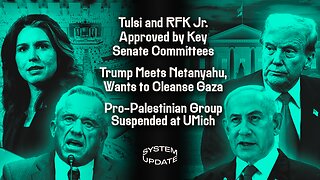 1:15:25
1:15:25
Glenn Greenwald
8 hours agoTulsi and RFK Jr. Approved by Key Senate Committees; Trump Meets Netanyahu: Wants to Cleanse Gaza; Pro-Palestinian Group Suspended at UMich | SYSTEM UPDATE #402
85.8K98 -
 1:43:57
1:43:57
Danny Polishchuk
8 hours agoThe Funniest Call In Show On Earth - Live From New York City's Best Comedy Club
48.6K1 -
 1:41:13
1:41:13
megimu32
7 hours agoON THE SUBJECT: Will the Super Bowl Be WOKE??!
37.8K7 -
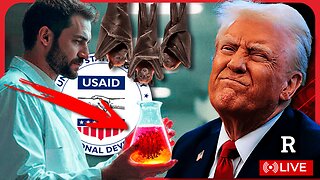 1:18:26
1:18:26
Redacted News
9 hours agoBREAKING! USAID Created and Funded COVID-19 Virus and Bioweapons, RFK and Tulsi pass major hurdle
158K206 -
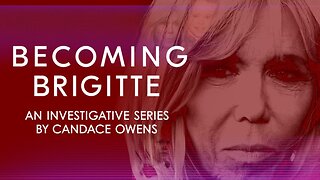 50:54
50:54
Candace Show Podcast
9 hours agoBecoming Brigitte: Gaslighting The Public | Ep 1
207K210 -
 4:41:05
4:41:05
Right Side Broadcasting Network
13 hours agoLIVE: President Trump Holds Press Conference with Israeli PM Benjamin Netanyahu - 2/4/25
229K100 -
 1:11:49
1:11:49
Edge of Wonder
9 hours agoInception Is Real: How Ads Are Showing Up in Our Dreams
39.5K6 -
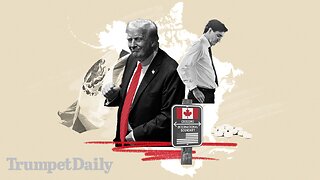 54:50
54:50
LFA TV
13 hours agoThe Trade War Ends | TRUMPET DAILY 2.4.25 7pm
35.7K7